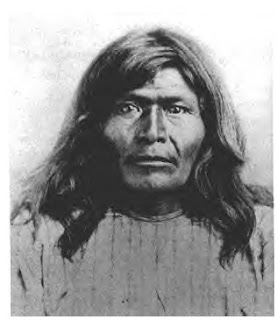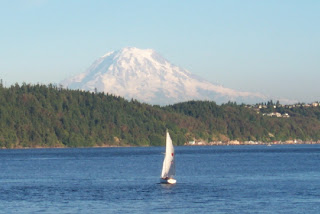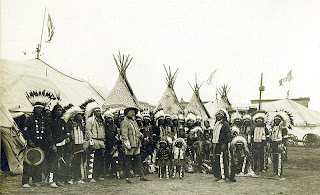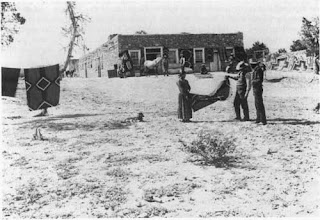Nevada City California sits high in the Sierra Nevada mountains east of Auburn and Grass Valley California. It's a beautiful old California mining town with lots of history attached. In fact, it's one of the most scenic gold mining towns of the old west.
There are two main ways to get there. If you're traveling westbound on Interstate-80 over Donner Pass you would exit at State Hwy 20 near Emigrant Gap and continue westbound about 35 miles along a winding but absolutely picturesque road. Traveling from the Sacramento area you would exit Interstate-80 in Auburn and travel eastbound on State Hwy 20 through Grass Valley and then about another five miles further to the east/northeast. The photo below is downtown Nevada City, 2011.
The Characters of a Gold Mining Camp
 |
| Courtesy Travis Thurston,Wikipedia |
 |
| Eleanor Dumont |
This woman by the name of Eleanor Dumont came virtually from nowhere. Prior to her arriving in Nevada City in 1854 nobody had heard of her. When the twenty-five year old Eleanor arrived on the stage from Sacramento it didn't take long for all that to change. The arrival of a woman in a mining town during those years was not really uncommon. Wives or fiances of miners, schoolteachers, even dance hall girls was not out of the ordinary. Eleanor Dumont didn't fit into any of these. From the moment she exited the stagecoach she stood out. After letting everyone know she was French she essentially spent her first week in Nevada City in her hotel room or sitting in the ladies parlor.
The Best Dressed Gamblers Anywhere
Eleanor's real intent of traveling to booming Nevada City didn't take too long to reveal itself. After about one week in Nevada City Eleanor set up a gambling house. She ran one table and she was THE dealer. The game of course was "blackjack". The grand opening featured free champagne. Reports are that the dusty miners washed up, put on their best clothes and boots to attend Eleanor's grand opening.
Now to the miners walking around with their gold dust a gambling hall was nothing out of the ordinary. What was out of the ordinary was having a woman as the owner not to mention blackjack dealer. These miners by all means were the best dressed gamblers of any gold camp gambling hall in all the west. Eleanor treated the awed miners with respect and gladly paid out if they won and even more gladly accepted their gold when they lost which was more the case. Believe it or not some miners had no problem losing their gold to a lady gambler. At least that's the way they said it was in Nevada City. There are no reports of how much was Eleanor's take on gala grand opening night but local lore is that everyone agreed she did very well.
 |
| Nevada City National Hotel Today |
During the next twenty years the story of Madame Mustache is a bit sketchy. One problem was that the mining towns she moved to were a bit different from Nevada City. Nevada City was the county seat and the town was quite organized for the era and the location.
Other towns that Eleanor set up gambling houses had a rougher sort of clientele. These people weren't happy losing their money regardless of the gender of the recipient. The name Madame Mustache followed her wherever she went which including other mining camps in California and Nevada. History reports that Eleanor traveled to Idaho and the Union Pacific Railroad construction camps in Wyoming. There are also tales that she traveled to the Black Hills and Deadwood South Dakota. Another report said she also visited mining camps in British Columbia.
Wherever there were men and money to gamble Eleanor tried to be present. There are stories that floated around that Eleanor, years after leaving Nevada City didn't just confine her business activities to gambling but may have also operated bordello's. Whatever the truth is, Eleanor had the ability to find out where the easy money was and made sure she got a piece of it.
The End in Bodie
Eleanor's end came suddenly in 1879 in the eastern California mining camp of Bodie California. On September 9, 1879, the Sacramento Union newspaper reported in only three lines..."A woman named Eleanor Dumont was found dead to-day about one mile out of town, having committed suicide. She was well known throughout the mining camps". The local town folk buried Eleanor and it would be a year later that her obituary appeared in the official History of Nevada City, California. Such was the story of Eleanor Dumont, Madame Mustache. You could say that she was the most mysterious single woman of the California gold mining towns.
Nevada City is one of the best old mining towns to visit while in California's Sierra Nevada foothills. The other one I would recommend visiting and not too far from Nevada City is Virginia City Nevada and the Comstock Lode. Nevada City has ninety-three buildings that are listed on the National Register of Historic Places. One interesting historic site is the National Hotel which still operates to this very day. The forty-three room National Hotel, established in 1852, is said to be the oldest continuously operating hotel west of the Rockies. That alone is worth a stop and photos. You'll find the National Hotel as one of the best restored buildings and hotels in Nevada City. If you travel there in the summer months you'll find the weather in Nevada City very mild due to it's elevation.
 |
| Lotta Crabtree, 1868 |
Additional related short stories of interest are Sutters Fort and the Gold Rush and California's Most famous Stagecoach Driver.
You may also be interested in a short story about Jack London.
(Photos from public domain. National Hotel photo from author's collection)
































